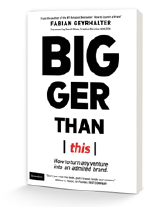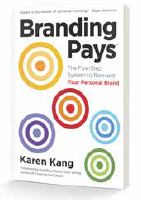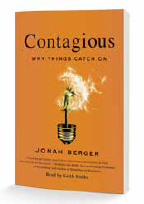Tugging At Your Heartstrings

Selling Point
Tugging At Your Heartstrings
How companies are using customer storytelling to associate emotion with their brands.
In the marketing world, companies are shifting away from the standard social media newsfeed and promo-style advertisements in favor of consumer stories. Consumer stories provide prospective buyers with firsthand accounts of actual buyers and their experiences with a product, service or company. It’s a way to provide valuable information as told from the perspective of a consumer, rather than the company.
One of the more common ways that companies are integrating consumer stories is through video. This is not a new technique, as the myriad of social media platforms have enabled people to share their opinions about anything, from the new snow-blower they purchased from Home Depot, to the cookie tin they bought from a boutique baker, or the antique-style lamp they snagged from Pier 1 Imports.
This change is evident on Facebook, where users are given the option to post a story instead of a written post. Stories, which were made popular by the social media platform Snapchat, allow users to share personal photos or videos that can be viewed limitlessly within a 24-hour period. Snapchat users can also share direct or personal "snaps," which can be viewed once, with the option to replay one personal snap per day. A similar option is provided by Instagram, which is owned by Facebook, but users can view these stories as many times as they’d like during this 24-hour period. What’s the appeal? Although some people have associated stories with being the “selfie central” of social media—and sometimes, it can be—for companies it provides yet another avenue to reach an even greater consumer market.
Companies outside of the social media realm are also using stories to reach consumers. The Ritz-Carlton recently launched “Let Us Stay With You,” an animated campaign intended to attract guests to its Yalong Bay resort in China, The Ritz-Carlton Sanya. One of the videos told the story of a retired Russian astronaut who was staying at the hotel. Recently widowed, he was having trouble enjoying his stay until hotel management surprised him with unexpected amenities throughout his visit. Every animation in the campaign follows the heartwarming memories of guests who visited Ritz-Carlton locations around the world.
Another campaign by German airline Lufthansa, #SayYesToTheWorld, attracted consumer attention through a recent commercial. The commercial features a compilation of people around the world being asked, “Why do you love the world?” which is answered in different languages and by people of diverse cultures, all while seated in Lufthansa airline seats. This not only offered an emotional angle, but it communicated the message that Lufthansa is an airline dedicated to international travel and serving consumers worldwide.
And of course, we can’t forget Airbnb—a company that’s entirely consumer-driven—which features a section on its website titled, “Stories from the Airbnb Community.” Because consumers essentially fund and run the business, Airbnb guides consumers to these short video clips instead of an About Us page.
These campaigns tug at consumers’ heartstrings, which influence customers to consciously associate emotion with the brand. This creates a valuable connection between the brand and consumers’ perceptions of the brand and improves its perceived value. Not to mention, it’s humanizing. Writer and semiotic brand analyst Rob Walker and his cohort, writer Joshua Glenn, took consumer stories to a different level with Significant Objects, a literary and anthropological experiment that features products with personal stories. The experiment, which auctions thrift-store items on eBay, was designed to show that by attaching a story to a product, regardless of whether that product is a pack of birthday candles or a plastic banana—which were both sold on the website—the value of the product can increase.
How can you incorporate storytelling into your brand or your client’s brand? Here are a few suggestions.
1. Use data. Those pages and pages of data compiled throughout the year can offer more than an annual report. The information communicated by your customers–-from the requests they have, to the feedback they offer, to the most purchased products—can be woven into a captivating, visual story that’s worth telling.
2. Be transparent about your philanthropic involvement. Does your company have a corporate giving program? Do you have an organization that’s near and dear to your heart? If so, share this with your customers. By creating a compilation video of contributions made throughout the year, you can add another tier of humanity to your brand—and, again, tug at those heartstrings.
3. Ask customers to share their experiences. Can you recall a particularly unique story, or two, about your interactions with customers? Has your company provided a rush-order for a client that “saved the day,” or did you go above and beyond to fulfill a special request? If so, it’s likely the customer will remember this effort and may be willing to share that experience with other prospective clients.
4. Don’t settle for good, when you can be great. Undoubtedly, some stories are more impactful than others. Of course, this is not to say that all the stories aren’t “great,” but some may resonant more with your customers. Collect enough information that your company has the option to choose stories that best represent its mission and vision.
5. Reintroduce existing products. You can use storytelling to transform something old into something innovative and interesting. Do you have a fan-favorite product you’ve been marketing for years? Create a video depicting a story about that product. Show how your customer interacts with the product and collect a few testimonials. This will present the product in a new and exciting way that your consumer hasn’t seen before.
–––––––––––––––––––––––––––––––––––––––––––––––
Branding
Welcome Back
Customer brand loyalty is on the rise.
Customer loyalty is a hearty piece of the business pie, especially when it comes to the promotional products industry. A trusted pool of repeat clients may guarantee business, but it’s also a consistent opportunity to provide excellent service and, hopefully, to receive equally excellent word-of-mouth referrals. Luckily, for those offering top-rate service, customer brand loyalty is increasing.
 According to a national survey conducted by Yotpo, an e-commerce marketing cloud resource, 90.2 percent of consumers consider themselves to be equally, if not more loyal to their favorite brands in 2018 than they were in 2017. And it appears the reasons are pretty straightforward, with 55.3 percent of consumers returning because of the product, and 25.7 percent because of the price. Additional reasons include customer service (7.1 percent), convenience (5.7 percent), other reasons (3.2 percent), charitable cause (1.8 percent) and popularity (1.2 percent). This trend extends into the digital realm, as 39 percent of online shoppers consider themselves loyal to their favorite brands. Similar numbers also hold true for Millennials, specifically. Morning Consult, a technology company specializing in research, surveyed 2,202 adults nationwide between the ages of 22 and 37, and found that 85 percent of consumers associate brand loyalty with reasonable pricing, 81 percent with reliability and 80 percent with high-quality products.
According to a national survey conducted by Yotpo, an e-commerce marketing cloud resource, 90.2 percent of consumers consider themselves to be equally, if not more loyal to their favorite brands in 2018 than they were in 2017. And it appears the reasons are pretty straightforward, with 55.3 percent of consumers returning because of the product, and 25.7 percent because of the price. Additional reasons include customer service (7.1 percent), convenience (5.7 percent), other reasons (3.2 percent), charitable cause (1.8 percent) and popularity (1.2 percent). This trend extends into the digital realm, as 39 percent of online shoppers consider themselves loyal to their favorite brands. Similar numbers also hold true for Millennials, specifically. Morning Consult, a technology company specializing in research, surveyed 2,202 adults nationwide between the ages of 22 and 37, and found that 85 percent of consumers associate brand loyalty with reasonable pricing, 81 percent with reliability and 80 percent with high-quality products.
But even though customer service wasn’t a standout requirement according to Yotpo’s study, this is not to say that it doesn’t play a pivotal role. Yotpo found that 67.3 percent of consumers expect ‘round-the-clock customer service, in addition to more discounts and deals (71 percent) and complimentary shipping (58.4 percent). Not to mention, with so many responsibilities falling within the scope of a brand’s success, customer service may be the glue that keeps a business together.
Neil Patel describes customer loyalty as “low-hanging fruit,” because it’s far easier and less expensive to retain customers than it is to acquire them. But it’s not as easy as it sounds. The Pareto Principle, also known as the 80/20 rule, suggests that 80 percent of a company’s sales will come from 20 percent of its customer base. This perspective suggests that if your company can determine key characteristics about this 20 percent pool of consumers, then you can position yourself to market more effectively to this population and ultimately grow your business. Moreover, repeat customers are likely to act on your behalf as advocates for the brand. Yotpo found that 60 percent of customers are likely to share information with friends and family about brands they love, while 52.3 percent are more likely to join a brand loyalty program and 39.4 percent are willing to pay more for a product from their favorite brands, regardless of whether other brands offer less expensive alternatives.
But to have customer loyalty, companies must be aware of what they are doing and how they are doing it. Poor customer service is a recipe for failure. If consumers are devoting their time to your brand, the assumption is that it’ll be worth their while, and customer service should ease the process, not complicate it. The product or service being offered should exceed the customer’s expectations. This requires quality, testing and strategic foresight. Value, which does not equate price, must be aligned with the customers’ expectations of the product. If a customer complains about the pricing of a product, it might be because the value is not obvious. And finally, like in all areas of life, consistency is key. If a company shows inconsistent branding, is unreliable with its products or provides iffy customer service, then major changes are needed—and fast.
–––––––––––––––––––––––––––––––––––––––––––––––
Tech Talk
There’s An App For That
A tech startup uses a thermometer to
advertise cold products to consumers.
If you feel a cold coming on, Kinsa has a solution. The San Francisco, California-based tech startup is selling a thermometer that does more than take your temperature: it syncs with smartphone apps to track your cold symptoms, triggering related advertisements to be directed your way. The smart component of Kinsa’s thermometer is sponsored by Clorox, which paid Kinsa to provide information about its consumers, referred to as “illness data.”
As we know, Clorox is in the business of cleaning up. When any one of the 500,000 households with a Kinsa thermometer uses the device, it alerts Clorox about each user’s zip code, allowing it to track cold and flu symptoms nationwide to detect trends. When Clorox sees a spike in cold and flu, as per Kinsa’s data, it focuses on marketing specifically to the region where the spike occurred, offering products like disinfecting wipes or multi-surface cleaner. (Kinsa reports that its thermometers follow the Health Insurance Portability and Accountability Act of 1996, and strictly sends data about health-related information that is free of the users’ names, phone numbers and email addresses.) Thus far, the initiative has increased engagement with Clorox ads by 22 percent. For Teladoc users, Kinsa is also in partnership with the tele-medicine company, allowing for the voluntary exchange of information between both applications.
Marketplace disrupter Amazon has also hopped on the cold and flu bandwagon. The company recently submitted a patent application about using its Echo device to detect coughing, sniffing and sneezing, and to offer products accordingly, like tissues, chicken soup or tea. The push into the health market by Kinsa represents forward movement for related companies, as there has been a lag in addressing cold and flu matters in the marketing sphere. In this initiative specifically, companies are exploring creative ways to market their products, focusing acutely on consumer needs and positioning their products as solutions to common problems, rather than commodities.
–––––––––––––––––––––––––––––––––––––––––––––––
AD-ITIVES
Animation, Hollywood and Driverless Cars
Audi advertises driverless car concept in 3D animation movie.
Audi turned to Hollywood to promote its concept of self-driving cars. The German car manufacturer and member of the Volkswagen Group signed a deal with Twentieth Century Fox to feature a virtual version of its latest concept car–-yes, just a concept—in the 3D-animated action movie, Spies in Disguise, to be released in September 2019. The movie, whose cast includes Tom Holland, Will Smith, Rashida Jones and DJ Khaled, is based on the 2009 short film, Pigeon: Impossible, which depicts an inquisitive pigeon who finds itself stuck inside of a spy's multi-million-dollar atomic briefcase. Spies in Disguise expands on this story when Lance (played by Smith), a spy, and Walter (played by Holland), an inventor, are tasked with saving the world.
 The car, which is referred to as RSQ e-tron, features the usual futuristic amenities, including a hologram speedometer, self-driving option and artificial intelligence. The movie’s first trailer, released November 1, 2018, featured the fastmoving RSQ e-tron picking up Lance in a parking garage. Through this project, Audi–-which worked with animation studio Blue Sky Studios—is positioning itself on the cutting edge of self-driving technology, letting consumers know that new products are underway. Audi also made sure not to make the same mistake as General Motors, who received backlash from overplaying Cadillac’s hands-free driving technology in July 2016. The commercial was intended to highlight the Drive Pilot, an optional driver-assistant feature that could be used in certain settings but was not considered fully autonomous. To avoid any possibility of misperception, Audi chose to showcase its new concept car in an animated world.
The car, which is referred to as RSQ e-tron, features the usual futuristic amenities, including a hologram speedometer, self-driving option and artificial intelligence. The movie’s first trailer, released November 1, 2018, featured the fastmoving RSQ e-tron picking up Lance in a parking garage. Through this project, Audi–-which worked with animation studio Blue Sky Studios—is positioning itself on the cutting edge of self-driving technology, letting consumers know that new products are underway. Audi also made sure not to make the same mistake as General Motors, who received backlash from overplaying Cadillac’s hands-free driving technology in July 2016. The commercial was intended to highlight the Drive Pilot, an optional driver-assistant feature that could be used in certain settings but was not considered fully autonomous. To avoid any possibility of misperception, Audi chose to showcase its new concept car in an animated world.
But it’s still somewhat of a tough sell, as consumers have not yet overcome their hesitations about whether self-driving cars are practical. Gallup, a research-based, international performance-management consulting company, conducted a poll of 1,503 people concerning their perspectives about autonomous cars. When asked what they would do if driverless cars became available in the next 20 years, 75 percent said they would own or lease a car to drive themselves, while 19 percent said they would own or lease a driverless car. Moreover, only nine percent said they would use this technology as soon as it is made available, while 38 percent said they would wait awhile and 52 percent said they were not interested whatsoever. But perhaps one day, this will change.
–––––––––––––––––––––––––––––––––––––––––––––––
Water Cooler
Good Reads
Improve your professional skill set and your company’s success with
books written by advertising and branding professionals.
As we’re entering the coldest months, it’s a good time to cozy up with a few great reads. Whether your focus is on building your personal brand or your company’s, getting the word out about new products, announcing your website launch or latest blog post, or growing your social media following, it can be helpful to learn about other perspectives or strategies used by professionals navigating the marketing and advertising realm. We scoured the depths of the web and found a few standout suggestions. (Note: these books have at least a 4.5-star rating on Amazon.)
 Bigger Than This:
How To Turn Any Venture Into An Admired Brand
Bigger Than This:
How To Turn Any Venture Into An Admired Brand
by Fabian Geyrhalter
Geyrhalter, a brand strategist who helped create more than 60 brands, shares how to turn commodity products into valued items. He discusses the eight traits that brands must use, which include story, belief, cause, heritage, delight, transparency, solidarity and individuality.
($14.95, five-star rating)
–––––––––––––––––––––

Branding Pays: The Five-Step System to Reinvent Your Personal Brand
by Karen Kang
Kang, who has been referred to as the “master of personal branding,” shares her five-step process, which involves positioning, message, brand strategy, ecosystem and action plan, as well as a discussion about promoting through social media and blogging. Professionals have dubbed her book a must-read for those looking to transform their personal brands.
($15.95, 4.7-star rating)
–––––––––––––––––––––

Contagious: Why Things Catch On
by Jonah Berger
Berger, a marketing professor at the Wharton School of the University of Pennsylvania, studies word-of-mouth marketing, viral online content, how social influence shapes what we do, and why some products or services skyrocket in popularity and sales while others flop.
($14.50, 4.5-star rating)
–––––––––––––––––––––
 The Culture Engine:
A Framework For Driving Results, Inspiring Your Employees, and Transforming Your Workplace
The Culture Engine:
A Framework For Driving Results, Inspiring Your Employees, and Transforming Your Workplace
by S. Chris Edmonds
Edmonds, the founder and CEO of The Purposeful Culture Group, shares how to set up an internal structure that yields success for any business, with topics including how to outline and enforce organizational culture, how to better engage employees, and how to demonstrate desirable behaviors and attitudes.
($19.41, 4.6-star rating)
–––––––––––––––––––––––––––––––––––––––––––––––
Making Waves
The Riviera Towel Co. donates a portion of its proceeds
to ocean cleanup and conservancy.
 Santa Barbara, California-based supplier The Riviera Towel Co. donates a portion of its sales to select nonprofits specializing in marine wildlife conservation and ocean pollution cleanup. Co-founder Albert DiPadova shares his views about the importance of giving back to Mother Nature.
Santa Barbara, California-based supplier The Riviera Towel Co. donates a portion of its sales to select nonprofits specializing in marine wildlife conservation and ocean pollution cleanup. Co-founder Albert DiPadova shares his views about the importance of giving back to Mother Nature.
PPB How and why did you become interested in donating a portion of Riviera Towel Co's proceeds to supporting marine wildlife and the oceans?
DiPadova I grew up on a boat, and I have always had a relationship with the ocean. Growing up in Key West, Florida, I was always in the ocean snorkeling in the outer reefs looking for lobsters and scuba diving in sunken wrecks. When I moved to San Francisco, California, in 1994, I started a company that provided weather data reports called SurfCheck, which was acquired by Surfline, now a leader in global surf reporting. My kids still check the live cams that I installed back then, and we hit the beach whenever the surf is up. Because the ocean gave me so much in this life, I’ve decided to dedicate my life to its service. It doesn’t take much to recognize that we are facing some dire environmental issues. We launched The Riviera Towel Co. to help raise awareness and fund organizations that are working hard to heal and protect our oceans.
PPB How does the process work?
DiPadova We have identified 10 organizations that are leading the fight against ocean pollution and marine wildlife conservation. Each has their own specialties, from the Coral Restoration Foundation in Florida to The Whale and Dolphin Conservancy in Massachusetts, which both aim to protect endangered species. We created collections of towels that fund each of these organizations with five percent of our net profits. Our goal is to double our donations year after year. It’s a slow, organic process that’s influenced by the world we live in, but with more and more consumers recognizing the need to give back, we’re feeling good about reaching our goals.
PPB How did you select the charities that you are helping?
DiPadova The organizations selected include the Coral Restoration Foundation in Key Largo, Florida; 4Ocean in Boca Raton, Florida; Santa Barbara Channelkeeper in Santa Barbara, California; Whale and Dolphin Conservation in Plymouth, Massachusetts; Channel Islands Park Foundation in Ventura, California; Oceana in Washington, D.C.; Save the Mermaids in Santa Barbara, California; and Surfrider Foundation in San Clemente, California. All of these marine organizations dedicate their best effort to healing and protecting the world’s oceans.
From the start, we knew that we wanted to build a purposeful brand with a mission to do more than make money. Before launching The Riviera Towel Co., my wife and I built a women’s fashion brand that was acquired in 2010 by an international manufacturer. It was a great ride but left us feeling less than fulfilled. So, when we launched Riviera, we structured the company around our mission to heal and protect our oceans.
PPB Do you have any suggestions for companies that are looking to start a similar initiative?
DiPadova You can’t do it alone. You need to enlist in the army of like-minded ambassadors, like we have, to help spread the word through social media.
PPB What kind of feedback has Riviera Towels received from customers? Does this kind of effort many any difference to sales?
DiPadova It does resonate with some, and it means nothing to others, but we do it because we believe we can make a difference, no matter how small. At least we’re rowing in the right direction.
PPB In your experience, does a distributor choose one supplier over another because of the charitable connection?
DiPadova I really don’t think that’s the first criteria that distributors are looking for. We believe you have to offer a premium product and great customer service, and if you happen to do some good work, that’s just a bonus. That’s why we manufacture and distribute premium Turkish towels for the home and beach. They are thin by design, so they dry quickly and pack up tight for easy travel. People love them because they’re so versatile. They are as much a fashion statement when used as a wrap or throw as they are when used as towels.
–––––––––––––––––––––––––––––––––––––––––––––––
Danielle Renda is associate editor of PPB.

